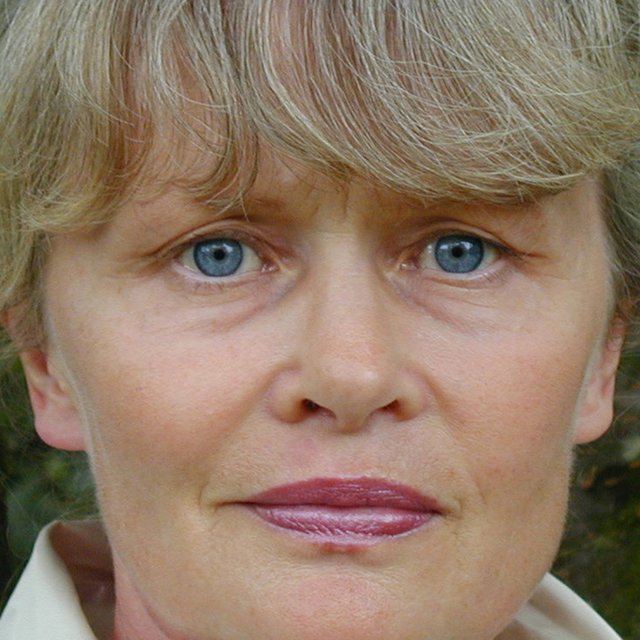The Shiny Sun (Den blanke sol)
- Vibeke Grønfeldt (1947 - )
Introduction to:
The Shiny Sun (Den blanke sol)
Published 1985, 260 pages
Vibeke Grønfeldt’s superb yet strange novel revolves around a little girl, Ruth; let down by the adults in her life, she ends up withdrawing into herself and wishing she did not exist. The adults either talk over the child or talk to the child as if to an adult. Either they behave as if the child is not there, or they use the child as witness in their bitter infighting. They push the child aside, or in their own self-interest they push the child to the fore as a line of defence against the other adults.
Whatever the nature of their actual behaviour, however, the upshot is a story about a little person disappearing into devastating loneliness, a process inexorably mediated to the reader as an almost unbearable sorrow. The ray of light and only constant in the novel is the brilliance and unerring hand with which it is written; the uncompromising approach is clearly its artistic strength.
That the book might be thought of as peculiar and singular is one consequence of its chosen narrative strategy. It could perhaps be said that Vibeke Grønfeldt has eliminated the agency of narrator and created a piece of psychological and social phenomenology. There are no explanatory upbeats or intermezzos: the events taking place on the stage where the novel is played out, and which so forcefully infiltrate the girl’s consciousness, are presented without narrative framing, as if the narrator herself has exited the text and left the reader alone with Ruth. Or, on the other hand, we could say that the author is the only person in the world who shows real care for the uncared-for girl.
To classify Vibeke Grønfeldt (b. 1947) as a prose writer is tricky; ever since her literary debut in 1976, she has been a unique voice in Danish literature. Internationally, she shares features with Dostoevsky – similarly not keen on having too firm a grip on his characters – and with Virginia Woolf, who was likewise skilled at converting tones of consciousness into text. Grønfeldt is a classical modernist in the tradition that takes in all the great loners who, despite their hard-hitting pessimism, will always be a source of healing power.
The above attempt at a characterisation has perhaps made The Shiny Sun sound more ‘different’ than it actually is. So, in conclusion let it be said that the story takes place in the Danish provinces at some time during the 1980s – the Falklands War is mentioned, and at one point Ruth watches an Olivia Newton-John video. At the beginning of the novel, the little girl is part of a family, with her mother Ida, her father Jan and her sister Asta. But when Ida leaves, the sisters are separated. Ruth is later accommodated in a variety of places with a variety of family members. She only speaks when asked a question, prefers not to speak at all, never asks for anything. ”Talk about something else,” she whispers in her head. Her mother’s central remark is this: ”I never wanted children, if that’s what you think.”
Erik Skyum-Nielsen, Associate Professor, University of Copenhagen
Modern Classics

AUTHOR:
Vibeke Grønfeldt (1947 - )
BOOK:
The Shiny Sun (Den blanke sol)
Gyldendal Publishing
Published 1985, 260 pages
FOREIGN RIGHTS:
Jenny Thor
Modern Classics
Vibeke Grønfeldt
Vibeke Grønfeldt was borned in 1947 on the Danish island of Samsø, where she still lives. She began writing at a very early age. In 1996 she received The Danish Academy's Major Prize for Literature, awarded for an enduring and distinguished contribution to Danish literature.